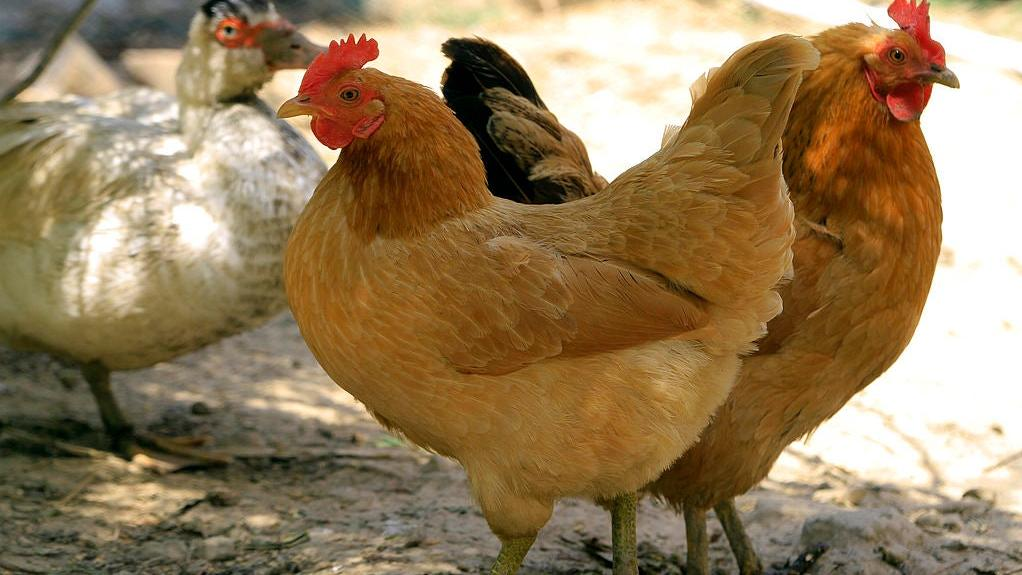How Bird Flu Will Affect Your Chicken And Egg Supply
The bird flu outbreak is devastating poultry farms across the East Coast and Midwest. It could add to existing supply chain issues.
I take no joy from injecting the word "outbreak" into your daily news feed, but I fear I must. In case you haven't heard, there's a highly lethal bird flu spreading throughout poultry farms across the East Coast and the Midwest. The virus in question is known as H5N1, and it spreads frighteningly quickly among both domesticated and wild birds. While the risk to humans remains low, there are a few things you, the consumer, should know about the virus.
How bad is the bird flu outbreak?
NBC News reports that the current outbreak is the worst bird flu outbreak since 2015. (Nearly 50 million birds either died from the virus or were slaughtered during the 2015 outbreak.) Since February, the H5N1 virus has been detected in at least 17 states; per NBC, the rapid spread "has largely been blamed on the migration of wild birds flying over domestic flocks and transmitting the virus through their droppings."
The current H5N1 strain is reportedly the same strain responsible for outbreaks across Europe and Asia late last year, per Healthline. Meanwhile, across the pond, the U.K. is battling its largest-ever bird flu outbreak, blamed on birds migrating to the area for the winter.
Can bird flu infect humans?
Yes and no. At this time, no human cases of H5N1 have been detected in the U.S., CDC spokesperson Kate Grusich said in a statement to NBC News. NBC News also interviewed Dr. William Schaffner, an infectious diseases expert at the Vanderbilt University Medical Center. Schaffner said the virus often "has trouble infecting humans," and that the disease definitely can't be transmitted to humans through "properly cooked food." The CDC also reported a "low risk" to the general public's health from current H5N1 viruses.
However, H5N1 is a rapidly evolving virus, notorious for frequent mutations. With that in mind, some experts worry that continued spread among birds could give the virus a better chance to mutate and infect humans more readily. (That kind of evolution is how we got new strains of COVID-19. Huzzah!) Some people may also be at higher risk of infection—poultry farmers, for example, or other individuals with frequent exposures to birds. But if you're worried about contracting bird flu through, say, a chicken tender, that's likely not a huge concern.
Will the bird flu affect the global supply chain?
Probably. The Associated Press reports that more than 13 million chickens and turkeys in at least eight states have been destroyed (or will be soon) to prevent viral spread. The latest example is a commercial chicken farm in Nebraska, which will destroy 570,000 broiler chickens after the flu was discovered in the flock. This comes on the tail of last year's poultry supply problems.
The virus will likely also affect the egg market. The BBC reports that consumers can no longer buy free-range eggs in the UK "due to the length of time hens have been kept indoors following outbreaks of bird flu." Affected eggs will now be labelled as "barn eggs" since the birds are being kept inside for months at a time to avoid exposure to wild birds. Whether that will impact egg prices remains to be seen.
Will poultry and egg prices increase?
Yes—but hopefully not by much. Economic software firm Gro Intelligence estimates that U.S. chicken prices are already reflecting a "bird flu premium," albeit a relatively small one. The firm writes:
"Wholesale broiler chicken prices were already at their highest level in at least 20 years on high consumer demand during the post-pandemic recovery. Heightened biosecurity measures put in place following the 2014-15 outbreak, and widespread testing and detection, may have increased confidence that outbreaks can be controlled."
To be more specific, wholesale chicken breast prices currently average $2.70 a pound, up about 6% from February 8, which is when the first bird flu case was reported in US commercial flocks. For context, during the 2015 bird flu outbreak, broiler cut prices "rose sharply within six weeks of the first disease discovery," increasing around 17%. Have prices simply already reached their tipping point thanks to pandemic-related inflation? Seems that way.
